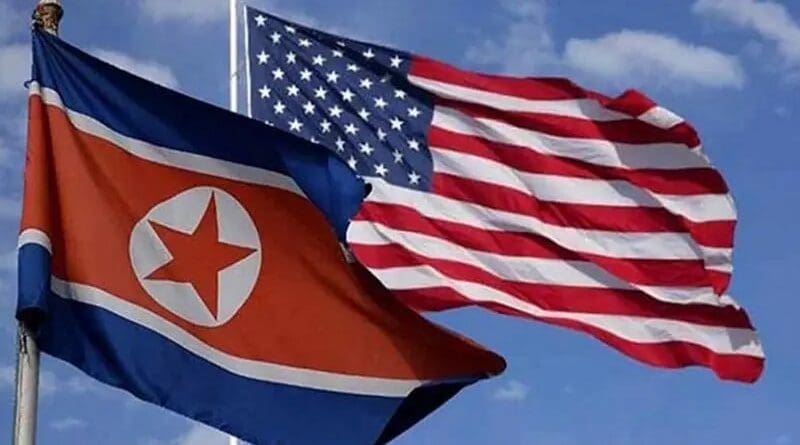North Korea: Business As Usual, But Pyongyang Is Worse Off – OpEd
By Published by the Foreign Policy Research Institute
By Benjamin Katzeff Silberstein*
(FPRI) — It shouldn’t come as a surprise that hopes of a deal between the US and North Korea appear to be crumbling fast. North Korea’s end-of-the-year deadline for negotiations is coming up, and the regime hinted this week that it conducted some sort of missile-related test at the Sohae launch site, which it earlier claimed to have been dismantling. Late last month, the regime test-launched two projectiles. Subsequently, President Trump tweeted on Sunday December 8 that Kim Jong-un risks losing “everything” if he “acts in a hostile way.” On Monday December 16, about a week later, Trump’s special envoy Stephen Biegun visited Seoul and stated at a press conference that the ball is in North Korea’s court, and that the US won’t be held by any deadlines imposed by Pyongyang.
So for now, at this time of writing, unless something changes drastically, negotiations are stalled and over for the time being. Things appear to be entering a state of low-intense hostility between the US and North Korea, similar to what existed for the period between the Korean War (1950–1953) and the start of Trump-Kim summitry in early 2018. This isn’t necessarily catastrophic for any of the parties. It may just mean business as usual, pre-2017.
Yet, for North Korea, things will still be worse, on balance, than they were before diplomacy began with the US. To be sure, the economic sanctions against North Korea seemingly aren’t enforced with the same stringency as they once were. Both Russia and China are campaigning to have sanctions eased drastically, and proposed a draft UN Security Council resolution late on Monday December 16 to abolish sanctions that prohibit North Korea from exporting some of its most crucial goods. Moreover, North Korea and Russia are in talks, for example, about Russian assistance for repairing North Korea’s power grid. Chinese tourism to North Korea has grown considerably since Kim Jong-un’s and Xi Jinping’s summit in June 2018, in what should partially be seen as a way for China to subsidize North Korea in difficult times. However, even though North Korea has some sources of income from abroad, the country is in a very difficult economic position with much of its foreign trade cut off by international pressure. Trade in its most crucial export goods, minerals and textiles is still largely dormant. With the diplomatic process on hold, the US can afford to, and will, keep pushing sanctions enforcement and expansion, and though China and Russia will likely fight much of it, it will not be easy for North Korea to get any substantial sanctions relief.
What’s more problematic in the long run is that North Korea has limited the range of possible economic partners even more with its decision to cut out South Korean involvement in the Mt. Kumgang tourism zone. The decision may have made economic sense in the immediate term. But Kim didn’t just put a stop to Mt. Kumgang. He put the final nail in the coffin of the Sunshine Era North-South economic cooperation, a model where South Korea provided the capital, and North Korea the labor. This was never beneficial for North Korea’s long-term development (as I argue in a recent commentary piece in Asian Perspective). At the same time, North Korean economic dependency on China is now greater, and less likely to change in the near future, than at almost any time in the past decade.
A recent South Korean research report calculated that China now makes up almost 92 percent of North Korea’s overall trade. North Korea has fewer options for diversification than before. Mt. Kumgang had already laid dormant for nine years, but it represented a small hope for sanctions relief and economic exchange with South Korea that North Korea could have secured as a concession in the nuclear talks, with a relatively low bar compared to other forms of relief. For now, that avenue is gone.
Dependence on China is one of the main, long-term strategic problems of the North Korean regime. The government is well-aware of it, but lacks concrete ways forward. The US can afford to have the process stall with North Korea, but for North Korea, the diplomatic process with the US is, at least for the time being, the only hope it has to get out from behind the sanctions wall. North Korea is continuously hurt by the status quo, America is not. This is also a reason not to take too seriously the deadline that North Korea set for negotiations at the end of the year. Provocations may well come, and things may get more tense, but North Korea has little choice given current circumstances but to hope for the diplomatic process with America to continue and lead to sanctions relief eventually.
As of this writing, Stephen Biegun is still in Seoul. Barring any unexpected agreements that include sanctions relief for North Korea, which at this point seems unlikely, the best outcome North Korea can hope for is that Russia and China increasingly relax their sanctions enforcement to eventually begin trading more openly with North Korea again. We are still far away from that.
*About the author: Benjamin Katzeff Silberstein is an Associate Scholar and 2019 Templeton Fellow with the Foreign Policy Research Institute, focusing primarily on the Korean Peninsula and East Asian region.
Source: This article was published by FPRI

